Enhanced steaming provides better chip impregnation, case study
When entering the chip bin, about one third of a chip's volume is air. In order for the white liquor to impregnate fast and evenly, the chips must be well steamed and the air content as low as possible. Unsteamed or poorly steamed chips will also have higher buoyancy than well steamed chips. This has a negative impact on runnability by affecting the chip column's driving force to sink.
Chips contain equal amounts of air, water and wood. Air needs to be removed in order to impregnate the chips. The air is removed by pre-steaming in a chip bin and steaming in a steaming vessel. The steaming vessel is normally sufficient at design tonnage rates, but only if good degassing can be maintained and the chips have been properly pre-steamed.
However, many digesters lack chip bin pre-steaming, or have a channeling chip bin resulting in unheated chips entering the steaming vessel, or are being run beyond the design tonnage rate. In these cases the retention time in the steaming vessel will be too short to compensate for the insufficient pre-steaming, resulting in runnability problems and negative effects on pulp quality.
Impregnation is the second process step in kraft pulping. Poor impregnation leads to uncooked chips and knots in the pulp. Impregnation can be improved either by increased time or better steaming.
Figure 1 shows a typical cooking system. Wood chips are fed from the wood yard to a relatively small chip bin to the top of the digester via a feed line system that includes the first rotary valve (low pressure feeder), a steaming vessel, then the second rotary valve (high pressure feeder). The purpose of the chip bin is to act as a chip buffer. Typically it is also used for pre-heating the chips using steam from flash #2 or fresh steam.
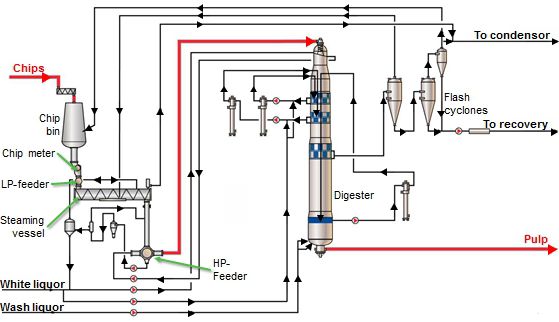
Figure 1 A typical conventional continuous cooking system with chip bin, low pressure feeder, steaming vessel, high pressure feeder, digester and flash tanks for the extracted black liquor.
When steam is added to a chip bin, the geometric shape has a great impact on the result. Plug flow with an even velocity profile in the chip column allows steam to be distributed all the way into the center. Without plug flow, chips will have different retention times in the bin (Figure 2, left) and in the end this will mean bad impregnation, high kappa variation and high reject content.
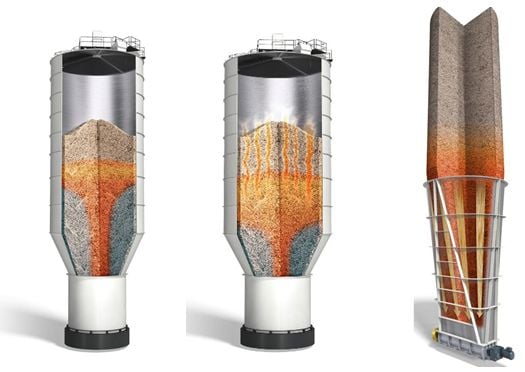
Figure 2 Plug flow in a general silo with restrictions in chip column movement (left), and gas channeling (middle), compared to Valmet Chip Bin OB with smooth plug flow (right).
Not only air leaves the bin during the pre-steaming, but also malodorous gases and turpentine (Figure 2, middle). This is usually one of the biggest reasons for the characteristic pulp mill smell and in many countries odorous gas emissions are restricted. To prevent this a good exhaust handling system and even chip column movement are essential.
A well designed chip bin, such as Valmet's new Chip Bin OB, will have a uniform velocity profile across the chip column. With smooth plug flow the chips themselves act as a lid, preventing the gases from escaping to the atmosphere (Figure 2, right).
Improved pre-steaming at Nordic Paper Bäckhammar
Nordic Paper Bäckhammar, Sweden, is a producer of unbleached kraft paper. The mill has two paper machines (133,000 tons/year) and a softwood pulp mill (210,000 tons/year). As the demand for the unbleached pulp produced at Bäckhammar had increased, most machines in the digester feeding line had been tuned and had reached maximum capacities. There were also machines that had to be replaced, including the steaming vessel and the chip bin.
Problems with existing equipment
The steaming vessel suffered from cracks and corrosion. In addition to the wear, the speed of the steaming vessel screw was at maximum. The old chip bin at Bäckhammar had been in operation for many years. Due to problems with the chip column movement, it had been equipped with air cannons. This helped, but did not solve the plugging problem and sledge hammers often had to be used. Another issue at Bäckhammar was the odor from the pulp mill. The weak gases from the mill have always gone to the atmosphere and consequently, the nearby village has suffered from a constant odor. About half of the mill's total weak gas emissions came from the old chip bin.
Installation of Valmet Chip Bin OB
The mill decided to install Valmet Chip Bin OB. It allows steaming to occur with a cold top which meant that no non-condensable gas (NCG) system was necessary. The new discharger also worked as a measuring device which meant that the chip meter could be removed. The new chip bin has a steaming header, asymmetrical cone and large outlet where chips are distributed over the whole discharger (Figure 3). Everything is designed to ensure smooth plug flow and even steam distribution in the chip column.
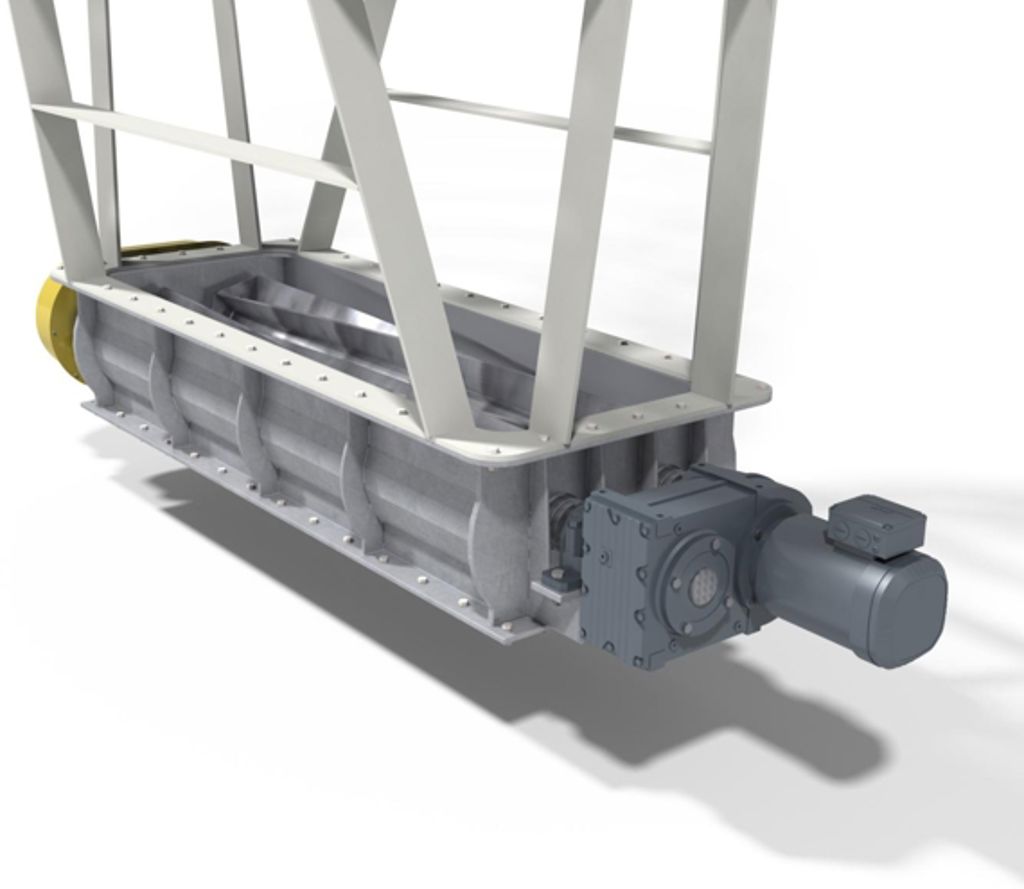
Figure 3 The Valmet Chip Bin OB full cross sectional discharger
The new chip bin was installed in October 2014 during the annual shutdown on a very tight schedule of eight days. The old chip meter and steaming vessel were removed and the new bin was placed between the chip conveyor and chip chute before the high-pressure feeder.
Results with Valmet Chip Bin OB
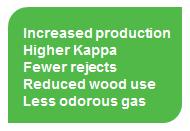
The project at Bäckhammar also included a larger size low-pressure feeder. This together with the new chip bin made it possible to increase the production from 620 up to 660 admt/d before other limitations in the feeding line appeared. At the same time as the production was increased, the kappa variation decreased indicating improved steaming and impregnation.
A higher kappa number and improved pre-steaming clearly showed that there are now significant fiber savings. The amount of reject from the screen room decreased and the wood consumption went down 2.7 % from 4.23 to 4.12 sm3(ub)/admt.
During winter time, a big part of the heat added is consumed just to heat the frozen or cold chips instead of removing air. Thus, winter is usually the toughest period when it comes to steaming efficiency and chip column movement. The first winter with the new bin, no problems with chip column movement occurred. Even when the bin mistakenly was filled with chips and liquor for a one day shutdown, the production restarted without any problems.
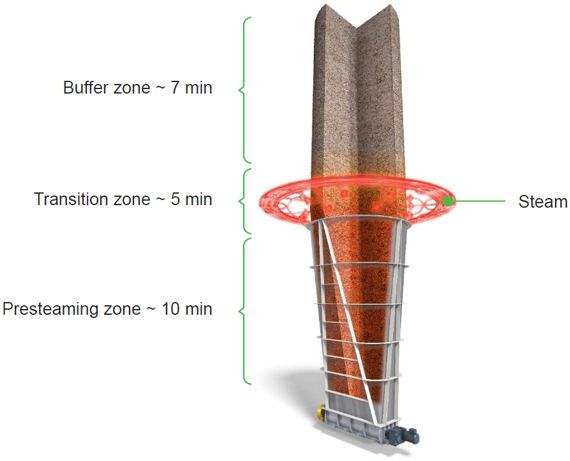
Figure 4 Improved chip flow and retention time at Bäckhammar with Valmet Chip Bin OB
Summary
The new Valmet Chip Bin OB with steaming described in this article has now been running successfully for a year at Nordic Paper Bäckhammar, Sweden with improved chip flow and retention time (Figure 4). The resulting impacts are: a higher yield, a reduced kappa variation and less malodorous gases to the atmosphere. At the same time the production has been increased.
A detailed explanation of the importance of pre-steaming and steaming and more details from the Bäckhammar installation may be found in a technical paper entitled "Improved Runnability and Impregnation by Enhanced Steaming" which was presented at the TAPPI 2015 PEERS Conference. Contact TAPPI (www.tappi.org) or your Valmet representative for a copy of this paper.
For more information on improving runnability and pulp quality with Valmet Chip Bin OB, contact your Valmet representative.